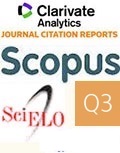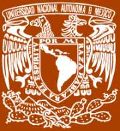|
Boletín de la Sociedad Geológica Mexicana Volumen 76, núm. 2, A240324, 2024 http://dx.doi.org/10.18268/BSGM2024v76n2a240324
|
 |
Uso prehispánico del espacio dentro del Parque Nacional Sierra de las Quijadas, Argentina
Prehispanic use of space in the Sierra de las Quijadas National Park, Argentina
Guillermo Heider1,*, Guillermo Ojeda2, Jorge Chiesa2, Mariana Ávila Navas3, Catriel Greco1,
Claudia Gogorza4, Alicia Irurzun4, Avto Goguitchaichvili5
1 CONICET-CCT San Luis, Departamento de Geología, Universidad Nacional de San Luis. Almirante Brown 907, C.P. 5700, San Luis, Argentina.
2 Departamento de Geología-Universidad Nacional de San Luis. Almirante Brown 907, C.P. 5700, San Luis, Argentina.
3 Secretaría de Turismo y Cultura, Municipalidad de Papagayos. Av. Illia y Junín, C.P. 5883, San Luis, Argentina.
4 Centro de Investigaciones en Física e Ingeniería del Centro de la Provincia de Buenos Aires (CIFICEN), CONICET-UNCPBA–CICPBA, Pinto 399 C.P. 7000, Tandil, Argentina.
5 Servicio Arqueomagnético Nacional, UNAM, Campus Morelia. Antigua Carretera a Pátzcuaro 8701 Col. Ex-Hacienda de San José de la Huerta, C.P. 58190, Morelia, Michoacán, México.
* Autor para correspondencia: (G. Heider) This email address is being protected from spambots. You need JavaScript enabled to view it.
Cómo citar este artículo:
Heider, G., Ojeda, G., Chiesa, J., Ávila Navas, M., Greco, C., Gogorza, C., Irurzun, A., Goguitchaichvili A., 2024, Uso prehispánico del espacio dentro del Parque Nacional Sierra de las Quijadas, Argentina: Boletín de la Sociedad Geológica Mexicana, 76 (2), A240324. http://dx.doi.org/10.18268/BSGM2024v76n2a240324
Manuscrito recibido: 25 de Octubre de 2023; manuscrito corregido: 29 de Febrero de 2024; manuscrito aceptado: 21 de Marzo de 2024.
ABSTRACT
This paper combines archaeology and earth sciences within the public use sector of the Sierra de las Quijadas National Park. The native peoples occupied this territory lacking surface water for at least the last thousand years. Archaeology shows a differential use of the landscape. Numerous quarry-workshop sites exist in the mountainous sector and residential spaces in the eastern foothills. Geomorphology suggests that rainfall events are channeled into the ephemeral streams in the foothills. This contribution analyzes the type of spatial relationship between these geoforms and the sites, as well as its causes. It is proposed that the local groups select with high frequency the ephemeral riverbeds to locate their residential bases. Several materialities show this relationship, including historic dams and combustion features, understood as structures related to water harvesting. In multiple latitudes, humans could persistently occupy territories with arid and semi-arid climates through the recurrent use of these types of watercourses. This is a consequence of their ability to channel and retain water for longer than the surrounding landscape. The case study presented here is a new example, emerging from the edge of the South American Arid Diagonal, about the people of the deserts and how they structured, and still structure, their landscape from the development of water management strategies concerning the prevailing geomorphology.
Keywords: geoarchaeology, human settlement, geomorphological dynamics, water harvest, South American Arid Diagonal.

